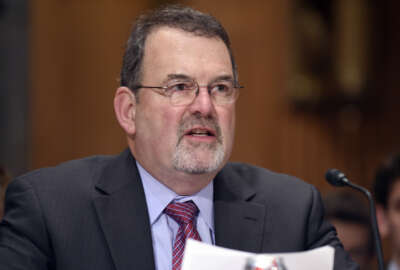

The 4th quarter update on Performance.gov details progress and plans for 2016.
If you are looking for the Office of Management and Budget’s IT policy plans for 2016 and the IT passback disappointed you, see my earlier notebook entry, the really interesting future-cast came from the fiscal 2015 4th quarter update of the Smarter IT Delivery cross-agency priority (CAP) goal on Performance.gov.
Over the next few months, OMB plans to release two new policies — one on data center optimization, and another on open source policy.
OMB says, along with the Digital Services Playbook, the policy “will support improved access to customer software code developed for the federal government.”
The data center policy, which we first reported back in November, will address this challenge in two ways: first it will offer a more specific definition of what a data center is. Second, OMB will set both agency-specific and governmentwide goals for reducing and optimizing data centers. Federal CIO Tony Scott said in November the total number of data centers is at more than 11,700.
OMB says it expects the data center policy to come out in January, but it missed its deadline to issue the open source policy, which was in December.
Along with the two new policies, OMB says it will refresh the cross-agency priority goal indicators in February and develop a way to measurably impact at least five of the government’s most important digital services by December.
What may be more significant than the upcoming policies and plans in changing how agencies deliver IT is the success, or lack thereof, of agencies in meeting the 2015 CAP goals.
On the positive side, OMB reported that as of September 22 projects had a digital services expert involved, up from six projects in the first quarter of 2015. Additionally, five agencies—the departments of Defense, Homeland Security and Veterans Affairs and the General Services Administration and Social Security Administration—had hired at least one digital services experts, that is up from two agencies earlier in the year. At the same time, three agencies stood up “buyers clubs,” up from one in 2014.
The administration reports that more than 4,000 people have applied to work in the U.S. Digital Service.
OMB also reported agencies are doing a better job meeting their project deadlines with 80.3 percent of all projects are within 10 percent of their cost estimates, and 79.3 percent was within 10 percent of their delivery schedules. Both are increases from 77 percent and 78 percent, respectively, in 2014.
One big question with this cost and schedule data is about the baseline. The Government Accountability and other experts long have questioned the accuracy of this type of data as agencies and OMB can move deadlines or change cost estimates on a whim, leaving the results circumspect.
There also is a growing frustration, and even some concern, about digital services. The fact that the Obama administration pulled USDS into a political hot-button issue of gun control led some to ask whether the office would continue to exist into the next administration.
Others in the federal community also have questioned whether USDS actually is about making government better or just something for administration priorities only regardless of the broad and long-term impact on improving federal services.
These issues around USDS and the accuracy of the data, as well as how strongly agencies get behind the third attempt to improve data center management are definitely worth watching over the next year.
Copyright © 2025 Federal News Network. All rights reserved. This website is not intended for users located within the European Economic Area.
Jason Miller is executive editor of Federal News Network and directs news coverage on the people, policy and programs of the federal government.
Follow @jmillerWFED


